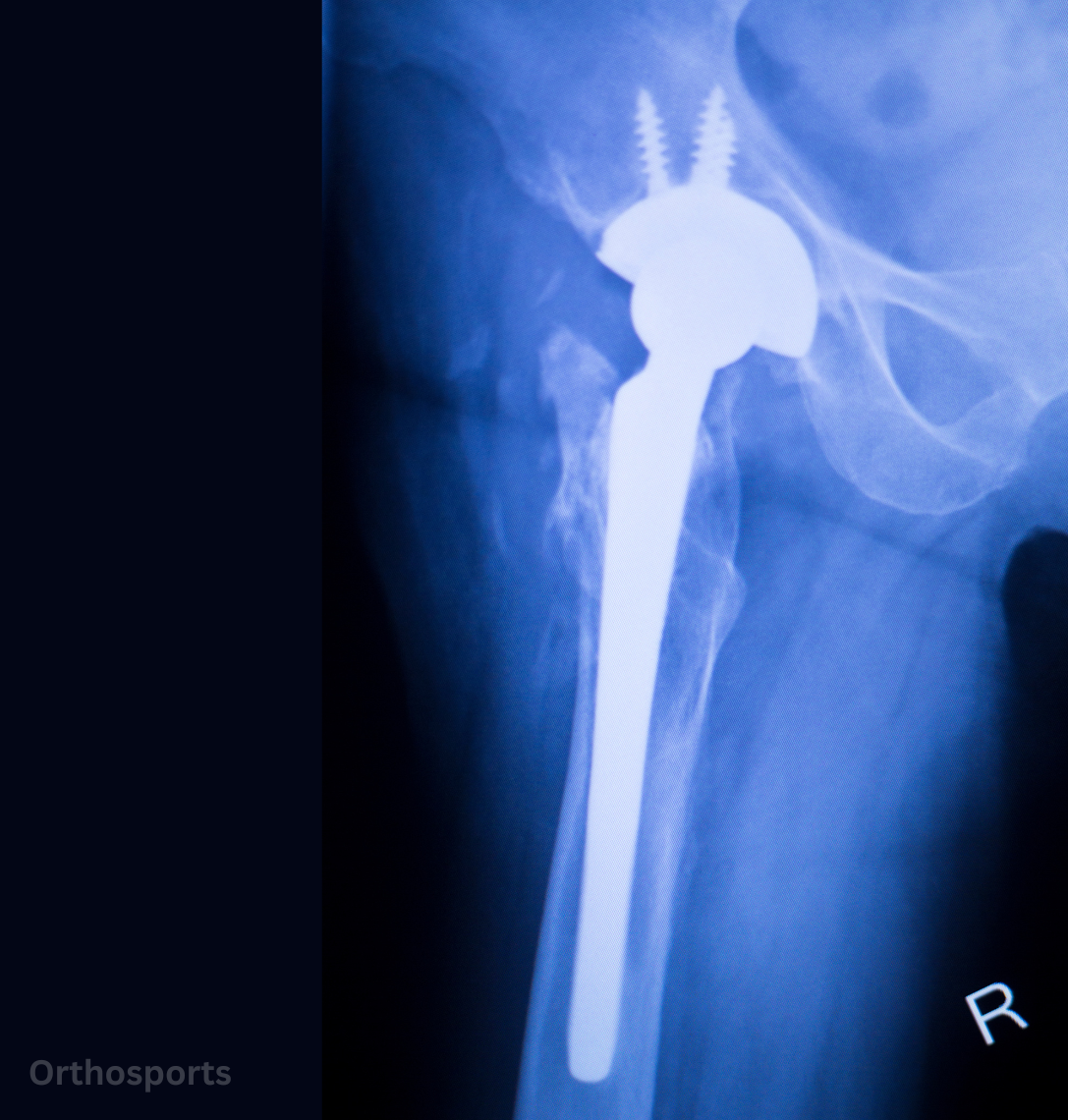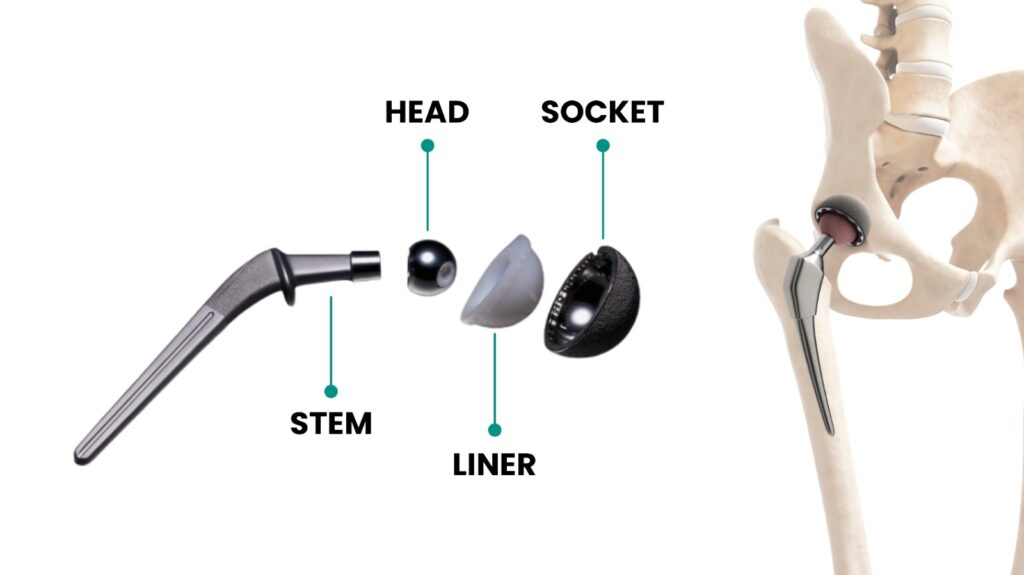Hip Replacement
What is Hip Replacement?
Hip replacement, also referred to as hip arthroplasty in medical terminology, is a surgical operation intended to relieve pain and restore function in a diseased or injured hip joint. During this procedure, the injured hip joint components are removed and replaced with artificial elements, also known as implants. The acetabulum and femoral head, the ball and socket that make up the hip joint, cooperate to allow for fluid movement. A hip replacement could be suggested when these parts wear out or get injured as a result of diseases including osteoarthritis, rheumatoid arthritis, or severe trauma.

Types of hip replacement surgeries
- Total Hip Replacement (THR): This type of procedure entails replacing the acetabulum and the femoral head. It is the most popular type of hip replacement and is usually advised when the joint has sustained severe damage.
- Partial Hip Replacement (PHR), also called hemiarthroplasty or bipolar arthroplasty. The acetabulum is left intact after this treatment, which merely replaces the femoral head. It’s frequently taken into consideration for certain situations, such hip fractures, particularly in elderly people.
- The primary goals of hip replacement surgery are to relieve pain, enhance mobility, and improve the overall quality of life for individuals struggling with hip joint issues. Thanks to advancements in surgical techniques and implant technology, hip replacements have become one of the most successful orthopedic procedures, allowing many patients to return to their daily activities and enjoy a more active lifestyle.

Common Conditions Leading to Hip Replacement
- Osteoarthritis: The most frequent cause of hip replacement is this degenerative joint disease. It happens when the cartilage that cushions the hip joint deteriorates, resulting in stiffness, discomfort, and decreased range of motion.
- Rheumatoid Arthritis: This inflammatory illness produces inflammation in the joints, which can result in substantial discomfort and joint deterioration, making hip replacement a realistic treatment choice.
- Avascular Necrosis: This disorder develops when there is a disruption in the blood supply to the hip joint, which causes bone tissue to die. It can be brought on by a number of things, such as trauma, chronic steroid usage, or excessive alcohol intake, and in order to restore function and reduce pain, hip replacement is frequently required. The number of cases of hip avascular necrosis has increased since the COVID pandemic.
- Hip Fractures: Hip replacement may be necessary for femur neck fractures, especially in elderly persons, in order to ensure early mobility and pain alleviation.
Symptoms
Patients may notice several symptoms that suggest the need for hip replacement surgery, including:
- Persistent Pain: Chronic pain in the hip joint that does not improve with conservative treatments such as medications, physical therapy, or lifestyle changes is a significant indicator.
- Limited Mobility: Struggling to walk, climb stairs, or perform daily activities due to hip discomfort can suggest it’s time for surgical intervention.
- Stiffness: A noticeable decrease in the range of motion and stiffness in the hip joint, especially after periods of inactivity, can signal that hip replacement may be necessary.
Recovery Process
Most patients spend one to three days in the hospital. Physical therapy will start soon after surgery to help with recovery, and pain management techniques, such as medication, will be used.


